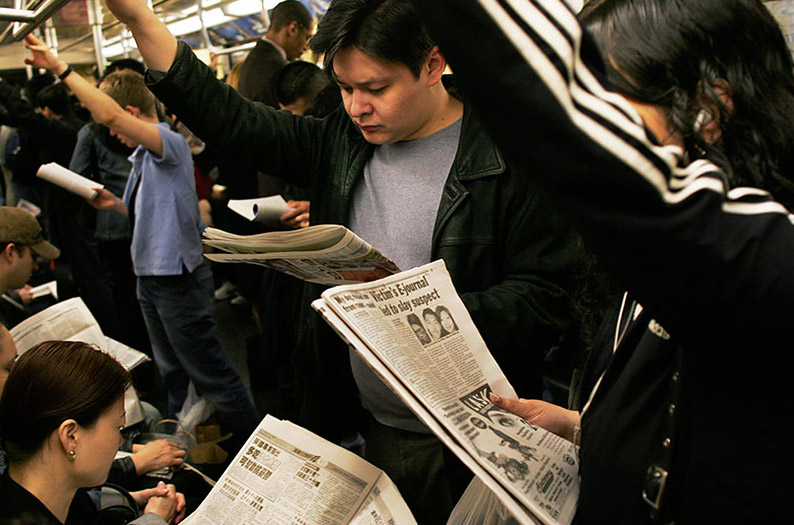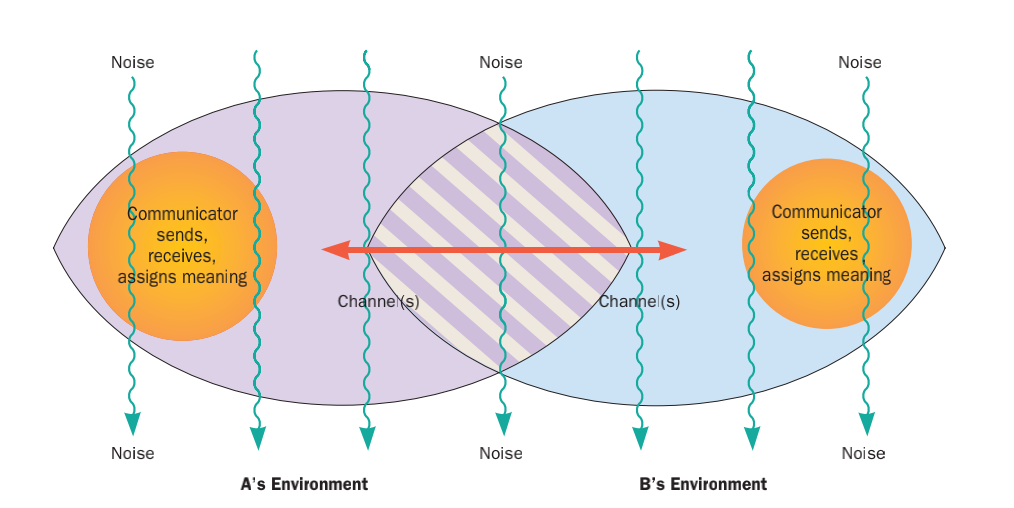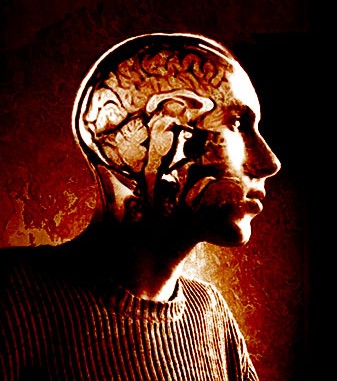|
Breaching Experiment
In the fields of sociology and social psychology, a breaching experiment is an experiment that seeks to examine people's reactions to violations of commonly accepted social rules or norms. Breaching experiments are most commonly associated with ethnomethodology, and in particular the work of Harold Garfinkel. Breaching experiments involve the conscious exhibition of "unexpected" behavior/violation of social norms, an observation of the types of social reactions such behavioral violations engender, and an analysis of the social structure that makes these social reactions possible. The idea of studying the violation of social norms and the accompanying reactions has bridged across social science disciplines, and is today used in both sociology and psychology. The assumption behind this approach is not only that individuals engage daily in building up "rules" for social interaction, but also that people are unaware they are doing so.Ritzer, George. 1996. “Ethnomethodology.” Pp. 3 ... [...More Info...] [...Related Items...] OR: [Wikipedia] [Google] [Baidu] |
Sociology
Sociology is a social science that focuses on society, human social behavior, patterns of Interpersonal ties, social relationships, social interaction, and aspects of culture associated with everyday life. It uses various methods of Empirical research, empirical investigation and critical analysis to develop a body of knowledge about social order and social change. While some sociologists conduct research that may be applied directly to social policy and welfare, others focus primarily on refining the Theory, theoretical understanding of social processes and phenomenology (sociology), phenomenological method. Subject matter can range from Microsociology, micro-level analyses of society (i.e. of individual interaction and agency (sociology), agency) to Macrosociology, macro-level analyses (i.e. of social systems and social structure). Traditional focuses of sociology include social stratification, social class, social mobility, sociology of religion, religion, secularization, S ... [...More Info...] [...Related Items...] OR: [Wikipedia] [Google] [Baidu] |
Interpersonal Communication
Interpersonal communication is an exchange of information between two or more people. It is also an area of research that seeks to understand how humans use verbal and nonverbal cues to accomplish a number of personal and relational goals. Interpersonal communication research addresses at least six categories of inquiry: 1) how humans adjust and adapt their verbal communication and nonverbal communication during face-to-face communication; 2) how messages are produced; 3) how uncertainty influences behavior and information-management strategies; 4) deceptive communication; 5) relational dialectics; and 6) social interactions that are mediated by technology. A large number of scholars have described their work as research into interpersonal communication. There is considerable variety in how this area of study is conceptually and operationally defined.Knapp & Daly, 2011) Researchers in interpersonal communication come from many different research paradigms and theoretical tradi ... [...More Info...] [...Related Items...] OR: [Wikipedia] [Google] [Baidu] |
Social Experiment
A social experiment is a type of Psychology, psychological or Sociology, sociological research for testing people's reactions to certain situations or events. The experiment depends on a particular social approach where the main source of information is the point of view and knowledge of the participants of the experiment. To carry out a social experiment, specialists usually split participants into two groups — active participants (people who take action in particular events) and respondents (people who react to the action). Throughout the experiment, participants are monitored by specialists to identify the effects and differences as a result of the experiment. Intentional community, Intentional communities are generally considered as social experiments. Social psychology offers insight into how individuals act in groups and how behavior is affected by social burdens and pressures. In most social experiments, the subjects are unaware that they are partaking in an experiment. ... [...More Info...] [...Related Items...] OR: [Wikipedia] [Google] [Baidu] |
Altruism
Altruism is the principle and moral practice of concern for the welfare and/or happiness of other human beings or animals, resulting in a quality of life both material and spiritual. It is a traditional virtue in many cultures and a core aspect of various religious and secular worldviews. However, the object(s) of concern vary among cultures and religions. In an extreme case, altruism may become a synonym of selflessness, which is the opposite of selfishness. The word "altruism" was popularized (and possibly coined) by the French philosopher Auguste Comte in French, as ''altruisme'', for an antonym of egoism. He derived it from the Italian ''altrui'', which in turn was derived from Latin ''alteri'', meaning " other people" or "somebody else". Altruism in biological observations in field populations of the day organisms is an individual performing an action which is at a cost to themselves (e.g., pleasure and quality of life, time, probability of survival or reproduction), ... [...More Info...] [...Related Items...] OR: [Wikipedia] [Google] [Baidu] |
Earl R
Earl () is a rank of the nobility in the United Kingdom. The title originates in the Old English word ''eorl'', meaning "a man of noble birth or rank". The word is cognate with the Scandinavian form ''jarl'', and meant "chieftain", particularly a chieftain set to rule a territory in a king's stead. After the Norman Conquest, it became the equivalent of the continental count (in England in the earlier period, it was more akin to a duke; in Scotland, it assimilated the concept of mormaer). Alternative names for the rank equivalent to "earl" or "count" in the nobility structure are used in other countries, such as the ''hakushaku'' (伯爵) of the post-restoration Japanese Imperial era. In modern Britain, an earl is a member of the peerage, ranking below a marquess and above a viscount. A feminine form of ''earl'' never developed; instead, ''countess'' is used. Etymology The term ''earl'' has been compared to the name of the Heruli, and to runic ''erilaz''. Proto-Norse ''eri ... [...More Info...] [...Related Items...] OR: [Wikipedia] [Google] [Baidu] |
Negative Emotion
Negative affectivity (NA), or negative affect, is a personality variable that involves the experience of negative emotions and poor self-concept. Negative affectivity subsumes a variety of negative emotions, including anger, contempt, disgust, guilt, fear, and nervousness. Low negative affectivity is characterized by frequent states of calmness and serenity, along with states of confidence, activeness, and great enthusiasm. Individuals differ in negative emotional reactivity.Tellegen, A. (1985). Structures of mood and personality and their relevance to assessing anxiety, with an emphasis on self-report. In A. H. Tuma & J. D. Maser (Eds.), Anxiety and the Anxiety disorders, (pp. 681-706), Hilssdale, NJ: Erlbaum. Trait negative affectivity roughly corresponds to the dominant personality factor of anxiety/ neuroticism that is found within the Big Five personality traits as emotional stability. The Big Five are characterized as openness, conscientiousness, extraversion, agreeableness, ... [...More Info...] [...Related Items...] OR: [Wikipedia] [Google] [Baidu] |
Queue Area
Queue areas are places in which people queue (first-come, first-served) for goods or services. Such a group of people is known as a ''queue'' (British usage) or ''line'' (American usage), and the people are said to be waiting or standing ''in a queue'' or ''in line'', respectively. (In the New York City area, the phrase ''on line'' is often used in place of ''in line''.) Occasionally, both the British and American terms are combined to form the term "queue line". Examples include checking out groceries or other goods that have been collected in a self service shop, in a shop without self-service, at an ATM, at a ticket desk, a city bus, or in a taxi stand. Queueing is a phenomenon in a number of fields, and has been extensively analysed in the study of queueing theory. In economics, queueing is seen as one way to ration scarce goods and services. Types Physical History The first written description of people standing in line is found in an 1837 book, '' The French Revol ... [...More Info...] [...Related Items...] OR: [Wikipedia] [Google] [Baidu] |
PASSENGERS WAITING IN LINE TO BUY SUBWAY TOKENS AT THE 8TH AVENUE LINE OF THE NEW YORK CITY TRANSIT AUTHORITY
A passenger (also abbreviated as pax) is a person who travels in a vehicle, but does not bear any responsibility for the tasks required for that vehicle to arrive at its destination or otherwise operate the vehicle, and is not a steward. The vehicles may be bicycles, buses, passenger trains, airliners, ships, ferryboats, and other methods of transportation. Crew members (if any), as well as the driver or pilot of the vehicle, are usually not considered to be passengers. For example, a flight attendant on an airline would not be considered a passenger while on duty and the same with those working in the kitchen or restaurant on board a ship as well as cleaning staff, but an employee riding in a company car being driven by another person would be considered a passenger, even if the car was being driven on company business. Railways In railway parlance, passenger, as well as being the end user of a service, is also a categorisation of the type of rolling stock used.Simmons, J ... [...More Info...] [...Related Items...] OR: [Wikipedia] [Google] [Baidu] |
Role
A role (also rôle or social role) is a set of connected behaviors, rights, moral obligation, obligations, beliefs, and social norm, norms as conceptualized by people in a social situation. It is an expected or free or continuously changing behavior and may have a given individual social status or social position. It is vital to both structural functionalism, functionalist and interactionism, interactionist understandings of society. Social role theory posits the following about social behavior: # The division of labour in society takes the form of the interaction among heterogeneous specialized positions, we call roles. # Social roles included appropriate and permitted forms of behavior and actions that recur in a group, guided by social norms, which are commonly known and hence determine the expectations for appropriate behavior in these roles, which further explains the place of a person in the society. # Roles are occupied by individuals, who are called Actor (UML), actors. #W ... [...More Info...] [...Related Items...] OR: [Wikipedia] [Google] [Baidu] |
First-come, First-served
Queueing theory is the mathematical study of waiting lines, or queues. A queueing model is constructed so that queue lengths and waiting time can be predicted. Queueing theory is generally considered a branch of operations research because the results are often used when making business decisions about the resources needed to provide a service. Queueing theory has its origins in research by Agner Krarup Erlang when he created models to describe the system of Copenhagen Telephone Exchange company, a Danish company. The ideas have since seen applications including telecommunication, traffic engineering, computing and, particularly in industrial engineering, in the design of factories, shops, offices and hospitals, as well as in project management. Spelling The spelling "queueing" over "queuing" is typically encountered in the academic research field. In fact, one of the flagship journals of the field is ''Queueing Systems''. Single queueing nodes A queue, or queueing node ... [...More Info...] [...Related Items...] OR: [Wikipedia] [Google] [Baidu] |
NYC Subway Riders With Their Newspapers
New York, often called New York City or NYC, is the most populous city in the United States. With a 2020 population of 8,804,190 distributed over , New York City is also the most densely populated major city in the United States, and is more than twice as populous as second-place Los Angeles. New York City lies at the southern tip of New York State, and constitutes the geographical and demographic center of both the Northeast megalopolis and the New York metropolitan area, the largest metropolitan area in the world by urban landmass. With over 20.1 million people in its metropolitan statistical area and 23.5 million in its combined statistical area as of 2020, New York is one of the world's most populous megacities, and over 58 million people live within of the city. New York City is a global cultural, financial, entertainment, and media center with a significant influence on commerce, health care and life sciences, research, technology, education, po ... [...More Info...] [...Related Items...] OR: [Wikipedia] [Google] [Baidu] |
New York City Subway
The New York City Subway is a rapid transit system owned by the government of New York City and leased to the New York City Transit Authority, an affiliate agency of the state-run Metropolitan Transportation Authority (MTA). Opened on October 27, 1904, the New York City Subway is one of the world's oldest public transit systems, one of the most-used, and the one with the most stations, with New York City Subway stations, 472 stations in operation (424 if stations connected by transfers are counted as single stations). Stations are located throughout the boroughs of Manhattan, Brooklyn, Queens, and the Bronx. The system has operated 24/7 service every day of the year throughout most of its history, barring emergencies and disasters. By annual ridership, the New York City Subway is the busiest rapid transit system in both the Western Hemisphere and the Western world, as well as the List of metro systems, seventh-busiest rapid transit rail system in the world. In , the subway deliv ... [...More Info...] [...Related Items...] OR: [Wikipedia] [Google] [Baidu] |








